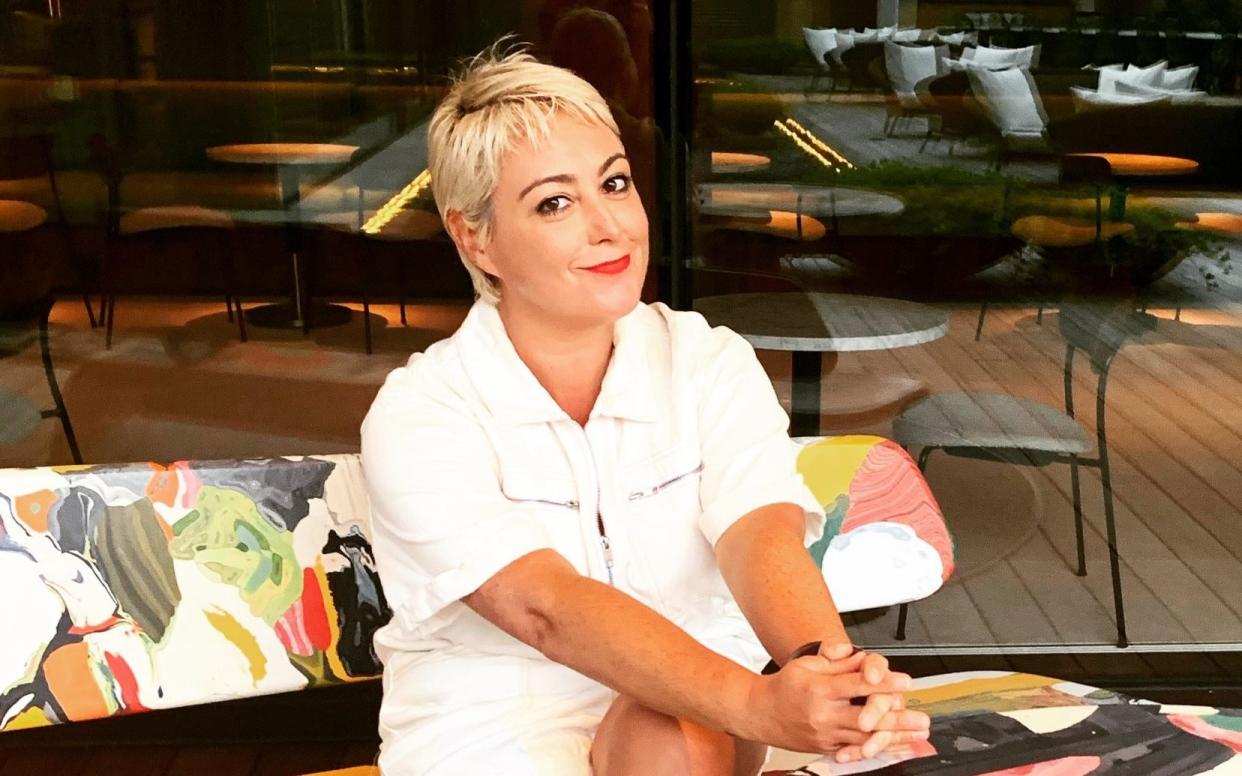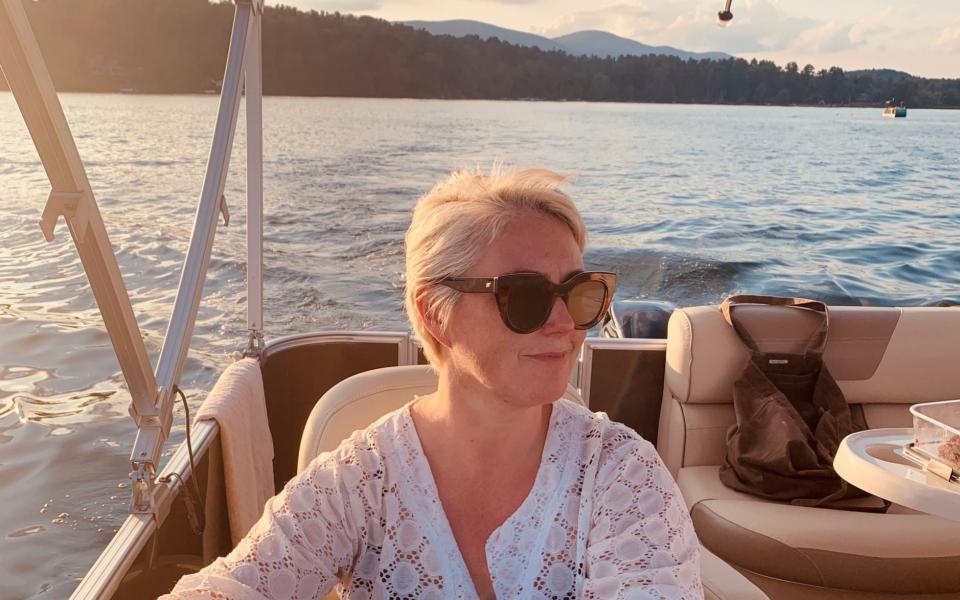How my New York dream has turned into a violent nightmare

When a fellow British expat friend packed up her midtown Manhattan apartment and decamped back to London last week, she outlined her reasons starkly on Facebook. “A few weeks back a mentally ill man spat in my face,” she wrote. “I came home, washed and went out again, and a different man was masturbating on my street corner. There were heroin addicts shooting up on the corner of 39th and Lexington Avenue... Whenever I needed to go out, I felt anxious. I got a pepper spray and started carrying it everywhere.”
A therapist friend told her that one of her patients had been spat on too, and another had been punched from behind and knocked to the ground. My expat friend had spent a decade in New York and had thought she’d be here forever. But, after all she encountered this summer, “I didn’t want to be in New York any more.”
A guilty brunch
Last weekend, I, too, marked 10 years in the city, a milestone I celebrated over brunch with a friend on the Lower East Side. Strolling back up the Bowery, one of downtown’s main thoroughfares, an uncomfortable guilt about our overpriced eggs settled as we saw the enormous queue outside the Mission, a homeless shelter distributing food parcels.
Not all of those in line to collect their carrier bag of basic provisions seemed to be strictly homeless, though they were certainly hungry – many were reportedly restaurant workers, from Chinatown in particular, who have not worked for six months, and whose $600 weekly government aid expired in late July.
Food bank network Feeding America reports a 70 per cent increase in people visiting its 200 nationwide food banks since the crisis began, with 40 per cent of those first-time visitors. And, earlier this month, the New York Times ran a story entitled ‘Minivans at the food pantry’ – families who had made six-figure salaries, owned luxury cars and sent their children to private school pre-pandemic, are suddenly finding themselves without an income, and turning to food banks to put a meal on the table. New York City estimates that up to a quarter of its 8 million residents may now be going hungry.
The homelessness crisis
The city’s homeless figure stands at almost 70,000 now, the highest number since the Great Depression. And, as we walked north of the Bowery, to Washington Square Park, that dramatic rise was immediately obvious, the pavements around the park populated by rows of tents of rough sleepers. Meanwhile, uptown, the well-heeled Upper West Side has become a flashpoint.
Hundreds of homeless people, including recovering addicts, registered sex offenders and mentally ill residents, were relocated from crowded hostels – potential hotbeds of coronavirus – to three empty hotels. But unhappy residents reported a dramatic uptick in drug-dealing, prostitution and assault in the surrounding streets. They even formed a community organisation, raising more than $100,000 to sue the city and have the homeless residents removed (to no avail thus far).
They say that you’re never more than three pay packets from homelessness or three days away from anarchy; New York has taken a little longer. But six months after coronavirus swept onto the island, killing more than 23,000 in the city, 32,000 statewide, and decimating the livelihoods of hundreds of thousands more, the veneer of stability is slipping, and the glossy, dynamic metropolis is rapidly becoming unrecognisable. Support is limited as far as the White House is concerned – Trump recently tweeted that his 85 million followers should ‘leave Democrat cities. Let them rot.’
I arrived in the city in September 2010 – laptop, suitcase and a head full of Sex and the City fantasies, trying to temper my expectations. I needn’t have bothered; within weeks, I was handed opportunities that would never have come my way back home.
I was soon hanging out in hotel rooms with George Clooney, and perching on the sofa in Gwyneth Paltrow’s Hamptons mansion, interviewing presidential candidates and the porn star who threatened to bring down the current president. I was heli-skiing in Alaska with Navy Seals, going undercover on Spring Break in the Gulf of Mexico, and getting wonky on a cannabis camp in Colorado. I hit my stride here in a way I’d never imagined.

All that joyful gadding about, however, juddered to a halt in early March, as New York enacted one of the strictest and most enduring lockdowns. Much of the city, including schools, indoor restaurants, cinemas, theatres and shopping malls, is still yet to reopen.
Exodus of the rich
The wealthiest New Yorkers fled immediately, decamping to second homes in the Hamptons or the Catskills, leaving the richest neighbourhoods up to 40 per cent empty. Most believed they would be sitting it out for a few months, max, but staring down the barrel of a bleak winter and beyond, many are now not coming back; waiting lists for private schools in the Hamptons are full. New York needs the revenue from its 1 per cent, however, and Governor Andrew Cuomo has begged the high rollers to return. But, as one friend pointed out, as we bellyached about the super-rich; if you had a yacht, why would you not be on it?
In late May, just as we began to tentatively gather in small groups, (outdoors) again, the city exploded in protest at the death of George Floyd, then, less peacefully, descended into violent running battles with the police department. Riot police in their hundreds assembled minutes from my front door, and kettled protestors in my local park. New York City was put under a curfew, for the first time since 1943. The US has experienced civil unrest this summer on a scale not seen since the 1960s. And when, in just over six weeks, America goes to the polls, whoever claims victory, nobody expects a peaceful outcome.
As summer wore on, the city crime rate soared; last month, there were 242 shootings, more than twice as many as in August 2019. Deprivation and desperation undoubtedly play a part, but commentators also point to a general sense of lawlessness. More than 2,500 prisoners were released early from the notorious prison at Rikers Island, due to concerns over the spread of the coronavirus, and suspects arrested on gun charges were bailed instead of jailed, to further stem the spread.
Meanwhile, a slowdown in the courts has created what the police have called a ‘permissive atmosphere,’ especially among gang members. An alliance of 6,500 businesses in Manhattan has hired its own security force. Meanwhile, among my friends, the Citizen app – which sends alerts of robberies, shootings or other incidents in your local area – is currently more popular than Tinder.
What now?
If things are so bleak, the obvious question is: why am I still here? In short, I’m trapped. I hold a work visa but not a green card and nor am I a citizen, and the terms of the current US travel ban prohibit any non-permanent resident from entering the country from the UK, Europe, China or Brazil. So, while I haven’t seen my family for six miserable months, if I leave now, I cannot come back.
And while, for now, I feel safe and secure sitting it out in my genteel neighbourhood of Brooklyn Heights, there have been a couple of symbolic indications that it, too, might be on the skids. One Saturday night during lockdown, a large rat casually strolled through my lounge; last week, a cockroach joined me in the shower. I poisoned the former and smashed the latter to smithereens with a 10lb hand weight from my lockdown home gym. I’m trying not to take any of it as too portentous a sign.

